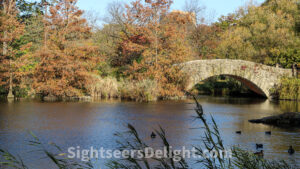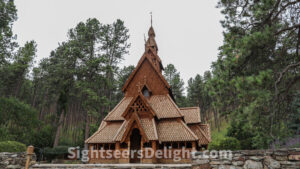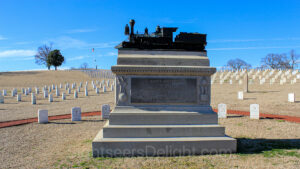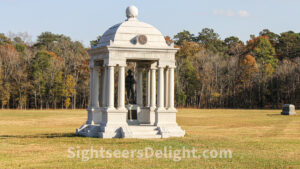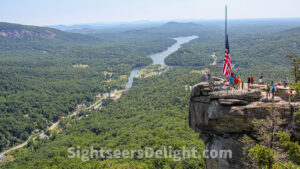
Guidebooks are annoying. Just because some editor who doesn’t know me tells me which restaurant is the best or what attraction is a must-see doesn’t make it a must-see attraction. Sightseers’ Delight is dedicated to the weird, the quirky and the fun. After all, traveling is fun.
If it’s not, you’re doing it wrong.
All of the places highlighted in this ever-growing database are great. Sightseers’ Delight has visited them all. We think you should make a point to see every one of them. But, this is not a guidebook. Just a webpage to help you plan your next adventure.
Central Park might be the most famous urban park in the world. City officials established the park in 1857 on 778 acres of city-owned land. The park was expanded to its current size of 843 acres in 1873. More than 40 million people visit the park every year. The U.S. Department of the Interior designated the park a National Historic Landmark in 1962.
The Chapel in the Hills, a prominent Rapid City landmark, replicates the famous Borgund Stave Church in Norway, dating to the 12th century. The Rapid City chapel was built in 1969 as a tribute to the early Norwegian settlers in the region. The chapel replicates the traditional Norse stave architecture, characterized by vertical wooden posts and intricate woodcarvings. It is made entirely of wood and features a turf roof. The chapel’s interior features intricate woodcarvings that adorn the walls and ceilings, and its design reflects the rich cultural heritage of the Norwegian people. The chapel holds regular church services and often hosts weddings, concerts and other special events.
In November 2008, Athens dedicated “The Character of a Champion,” a 14-foot-tall bronze statue of Vince Dooley, the legendary former football coach of the Georgia Bulldogs. Athens sculptor Stan Mullins crafted the statue of Dooley, depicting the former coach being hoisted onto the shoulders of his players after winning the 1980 national championship. Dooley was head coach from 1964 until 1988. He was the university’s athletic director from 1979 to 2004 and was inducted into the College Football Hall of Fame in 1994. The memorial was dedicated in 2008 before the annual Georgia-Georgia Tech football game.
30605
Designated as a unit of the National Park System in 1978, the Chattahoochee River National Recreation Area preserves and protects the natural and cultural resources of the 48-mile Chattahoochee River corridor from Buford Dam to Peachtree Creek. The park annually welcomes more than 3,000,000 visitors.
The Chattanooga Choo Choo dates to 1909 when it saw the departure of its first passenger train. The Choo Choo served as a functioning train station until Aug. 11, 1970, when the last passenger train departed. The station has since found a new life as a hotel, and guests can stay in either a standard room or in a refurbished rail car. There are plenty of places at the Choo Choo to eat and shop, and a 1924 New Orleans trolley whisks visitors around the hotel’s grounds.
37402
Chattanooga National Cemetery is located near the center of the city of Chattanooga, Tennessee. Administered by the United States Department of Veterans Affairs, it encompasses 120.9 acres and has more than 50,000 interments. The cemetery was established in 1863, by an order from Major General George Henry Thomas after the Civil War Battles of Chattanooga, as a place to inter Union soldiers who fell in combat.
37404
The Chattanooga Whiskey Company was launched in November 2011, but the company initially distilled through contractor MGP of Indiana in Lawrenceburg, Indiana, because of Tennessee laws. In March 2015, after officials changed local laws, the company opened the first legal distillery in Chattanooga since Prohibition.
Chickamauga and Chattanooga National Military Park preserves the sites of two major battles of the American Civil War: the Battle of Chickamauga and the Chattanooga Campaign.
30742
Chiesa di San Salvatore di Ognissanti or the Church of All Saints dates to the 1250s, but architect Bartolomeo Pettirossi rebuilt the church in Baroque-style around 1627. The Vespucci family attended the church, and Amerigo Vespucci is buried here. The church features 15th frescoes by Domenico Ghirlandaio and Sandro Botticelli, who is also buried in the church. Ghirlandaio created a fresco of the Last Supper in the refectory. The work may have influenced Leonardo da Vinci’s later work in Milan.
28720

